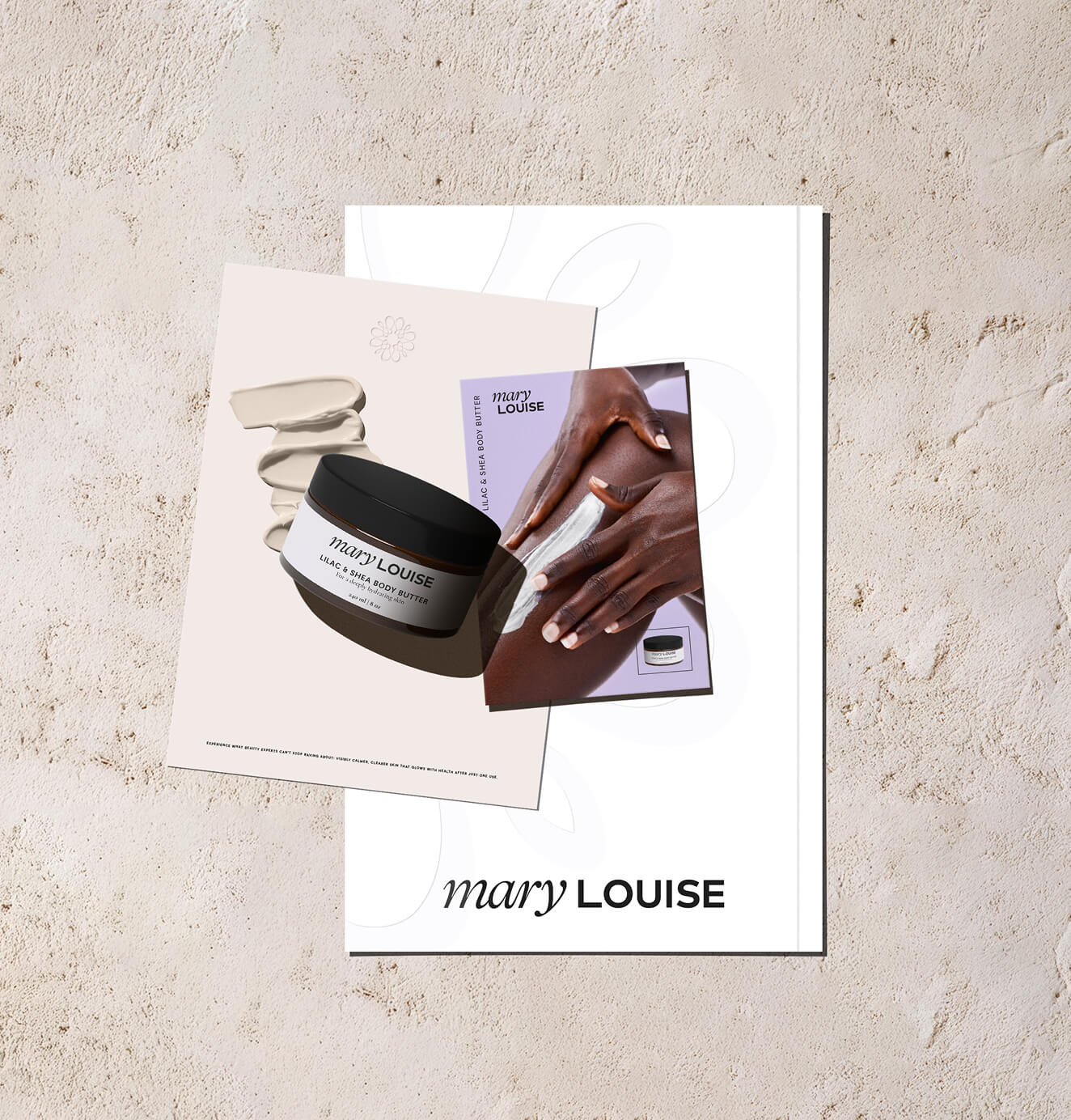What is Brand Positioning?
03/26/2025
Brand Strategy
Brand positioning defines how your brand is perceived in the minds of your audience and sets you apart from your competitors.

Brand positioning is arguably the most important part of branding your business, it will influence all future branding and marketing decisions. At its core, brand positioning is the process of defining how your business wants to be perceived by customers. There are several key steps involved in creating a brand positioning strategy. The first step is to clearly define your target market and understand their needs and values. Next, you need to identify where your company fits within that target market and what sets you apart from your competitors. Once you have a clear understanding of your brand positioning, it's time to put that strategy into action with marketing and branding efforts. Brand positioning is an integral part of any company's marketing strategy, as it helps guide future decisions about which products and services to offer, how to market those offerings, and which audiences to target. By crafting a strong brand positioning strategy, companies can more effectively connect with their customers and build lasting relationships that drive business growth. Your brand positioning is the foundation of your business, you wouldn't build a house without foundation and a business is the same. You need brand positioning, without it, you are flying blind and will struggle to gain traction in the marketplace.
.png)


What is Brand Positioning?



Marketing author, consultant and professor Philip Kotler defines brand positioning as “the act of designing the company’s offering and image to occupy a distinctive place in the mind of the target market.”
Brand positioning encapsulates the strategies that are used to shape consumer perceptions.
These brand strategies include the brand purpose, purpose statement, brand pillars, brand mission, brand vision, brand personality, brand tag line, brand story, and brand messaging.
In this post, we will cover these topics which we use to help our clients successfully position their brands in the marketplace.
We will also share some of the tools and frameworks that aid in developing brand positioning. Lastly, we will share a model that can be used to frequently evaluate brand positioning.
Whether you're a young entrepreneur just starting out or your an established brand looking to refine your existing brand positioning strategy, there are a few key steps that every company should take.
What is a Brand Positioning Map?
What is a Brand Positioning Map?
Brand positioning maps are tools used by companies to help them effectively position their brands in the minds of their target audiences.
These maps typically consist of a set of brand concepts and values, as well as the perceptions that customers have of these concepts and values.
There are many different frameworks and tools that can be used when developing a brand positioning strategy, brand positioning maps are one of them.
For example, the brand matrix is a useful tool to help you choose which product features, benefits, and attributes to emphasize when positioning your brand.
If you're looking to create or refine your brand positioning strategy, the team at The Branded Agency is here to help. We offer a range of branding and marketing services designed to help companies build lasting relationships with their customers and achieve long-term success.
Brand Purpose
One of the first components of brand positioning is brand purpose.
The brand purpose is fundamental to branding, as it is the number one factor that distinguishes a brand from competitors.
To communicate the brand purpose, it is important to develop a short, memorable statement (i.e., 1-2 sentences) that sums up the who, what, why, and how of the business by incorporating the brand pillars and key messages.
With our client, RealPekka, we have developed a purpose statement that helped solidify their brand positioning.
It helped ensured alignment across all functional areas of the business and brand. Here is a quick example taken from our RealPekka case study.
Cult Branding is another useful reference.
They offer a simple template to develop this brand positioning/purpose statement that incorporates four essential components of brand positioning: the target customer, market definition, brand promise, and reason to believe.
“For [target customers], [company name] is the [market definition] that delivers [brand promise] because only [company name] is/has/does/offers [reason to believe].”
To see this brand positioning and purpose statement in practice, we can use the brand Nike as an example for the niche running market.
“For runners of all abilities, Nike is the shoe and apparel provider that delivers high performance because only Nike offers top-of-the-line products that will give runners an edge over their competition.”
By regularly referring to the brand positioning/purpose statement, companies can make decisions that will aid in the better overall consistency and effectiveness of their operations.
Brand Pillars
Brand pillars are the next topic to consider within brand positioning.
These are the guiding principles that all branding decisions should follow to ensure proper alignment with the brand purpose.
Most brands can be described in 3-5 words (or brand pillars) that can be used to express what the company is about, how they operate, and why they exist.
The brand pillars are often closely related to or overlap with words that are used to describe the brand personality.
While the brand personality is an extensive and separate topic to cover; the brand archetype wheel is a common and relatively straightforward reference that can be used to develop both the brand personality and brand pillars.
The brand archetype wheel has 4 different categories, with 3 archetypes in each and descriptive words that are used to make sense of each archetype.
Continuing with our Nike example, we can use the brand archetype wheel to come up with Nike’s brand pillars.
According to the model, Nike fits “The Hero” archetype, and some of the brand pillars that can be used/considered include: bold, inspirational, courageous, and strong.
Other potential brand pillars that could be used for Nike are performance and innovation.
These words work to reinforce the brand positioning and purpose.
Without brand pillars, a company will lack direction when it comes to its branding efforts.
The brand will also suffer from a lack of direction and consistency in messaging, which is a topic that we will cover in the latter half of this post.
Brand Mission
The brand mission is one of the most widely known aspects of brand positioning within the marketing world.
The brand mission can be communicated by creating a vision and mission statement that reveals the brand’s reason for being.
The work we do with clients on the brand mission varies substantially.
It is dependent on the maturity of the company. If a company already has a vision and mission statement in place, we will determine if adjustments need to be made based on market research.
It is no longer enough for businesses to exist to simply sell products and services.
The brand mission takes the company to a new level that fosters long-term relationships with customers and consistency in branding and marketing efforts.
To reap these benefits, it is advisable to include a vision and mission statement on the company website.
Vision Statement: a clear and concise statement (i.e., 1-2 sentences) that identifies the larger purpose and long-term vision for the brand.
Mission Statement: a short statement (i.e., 1 sentence to 1 paragraph) that articulates the mission for the brand or the reason for the company’s existence and the direction of short and long-term goals.
Nike is an example of a brand that posts its brand mission for the world to see on its website.
“Our mission: bring inspiration and innovation to every athlete* in the world. *If you have a body, you are an athlete.” - Nike
They follow up this short mission statement with a paragraph that includes more details about the company’s operations and how they plan to follow through with the brand mission and brand purpose.
“Our mission is what drives us to do everything possible to expand human potential. We do that by creating groundbreaking sport innovations, by making our products more sustainably, by building a creative and diverse global team and by making a positive impact in communities where we live and work.” – Nike
To ensure that the brand mission will aid in competitive brand positioning, market research should be conducted to reveal gaps in the market, the target customer profiles, and their specific needs and wants.
Some of the brand missions that are common these days include those with a focus on sustainability, diversity, and inclusion. These are important factors to consider and include in the brand mission and values, but nowadays, they have become commonplace and a necessity.
To truly differentiate, a unique brand mission should be developed.
Brand Story












Following the brand mission is a vivid and rich brand story.
By communicating this story with the target audience, consumers will better connect with the brand's purpose, pillars, and mission.
The brand story is often articulated on a company’s website by describing the history of the brand.
This may involve the specific people or places that bring the brand to life and give it greater meaning.
The brand story is also essential for differentiation purposes.
No two brands are the same, just like no two people are the same; we all come with different stories and backgrounds that make us unique.
One of the greatest tools for communicating your brand’s story these days is social media.
This is why, when working with clients such as Keoch, we have included social media guidelines that will aid in rich interactions with the target audience. Here is a quick example from our Keoch case study.
Brand Messaging
Brand messaging involves highlighting the key messages that are used to flesh out the brand story and solidify the brand positioning.
These key messages should support the brand's purpose, pillars, mission, and story.
By identifying specific brand messages that will be used throughout campaigns, brands can achieve greater consistency and recognition within their target audience.
When we evaluate Nike, there are a few key messages that come through.
The first message is motivational, which is reflected in the tagline: Just Do It. Another key message is supported by the brand’s mission; involving inclusivity and that all people are considered athletes.
Finally, they utilize sponsored athletes in promotions to communicating their performance-oriented mindset.
As a general rule of thumb, businesses should identify 3-5 key messages that will be used for seasonal campaigns, social strategies, content marketing, and all other branding/promotional efforts.
Branding Tools & Frameworks
To visually conceptualize the brand purpose, pillars, mission, story, and messaging, branding tools and frameworks should be utilized.
When working with clients, we like to use mind maps, conceptual maps, and the golden circle to summarize our branding recommendations.
Mind maps are great tools to visually convey the action verbs, descriptive words, complementary words, and feelings/emotions that the brand intends to bring about. By using a mind map, companies can display the words and concepts that inspire the brand positioning.
Conceptual maps are similar to mind maps as they are a visual representation of the phrases and concepts that inspire the brand positioning.
The golden circle is the last brand framework that we utilize often when working with clients.
The golden circle identifies the outer section of brand positioning or “what” the brand is/does, the mid-section or “how” the brand operates, and the inner section that is the most important in branding efforts, which is the “why". Using the golden circle offers a great way to simplify the essence of the brand through its core principles.
Want to learn more about brand platforms, Brand Strategy and Brand Identity? Keep reading!
If you need help with your companies brand strategy and identity, contact us for a free custom quote.
Evaluating Brand Positioning: Consumer Brand Based Equity (CBBE)

It is one thing to implement the brand positioning strategies that we have listed in the post, it’s another to successfully incorporate them to achieve bottom-line results.
To make sure that these strategies are having their desired effect and return on investment, it’s a good idea to continually evaluate brand positioning.
It is one thing to implement the brand positioning strategies that we have listed in the post, it’s another to successfully incorporate them to achieve bottom-line results.
To make sure that these strategies are having their desired effect and return on investment, it’s a good idea to continually evaluate brand positioning.
To do this, Professor of Marketing Kevin Lane Keller proposes the consumer brand-based equity (CBBE) model in his book strategic brand management.
To correctly use this model, companies should evaluate performance at each level of the CBBE by conducting primary and secondary research with their target customers.
For example, to evaluate the brand identity, a business might consider conducting a survey that asks consumers which brands come to mind when they hear certain words or phrases.
This will identify the depth and breadth of brand salience/awareness, revealing the identity of the brand or “who” the brand is in the minds of the target audience.
By using the CBBE model, businesses can better understand their brand positioning by evaluating consumer perceptions. This information can then be incorporated into the branding strategies.
Brand Positioning Steps

To summarize this post on brand positioning, you can refer to the 6 simple steps that we have listed below.
- Identify the brand purpose and develop a brand positioning/purpose statement.
- Decide on 3-5 brand pillars that express the “what”, “how”, and “why” of the brand.
- Develop a brand mission and create a vision and mission statement.
- Articulate the brand story by writing a brief segment in the “About Us” section on the website and harnessing the power of social media to communicate the story to consumers.
- Highlight 3-5 key brand messages that will consistently be used for promotional purposes and branding efforts.
- Frequently evaluate the overall brand positioning and the effectiveness of these strategies by utilizing the CBBE model.
By following these steps, there is a greater chance that your business will achieve its desired brand positioning and reap the rewards that follow.
For more branding information, you may want to check out our recent blog post on How to Build a Brand Strategy!
We also offer services that will help you launch, grow, and scale your business.
Book a call with us!
We're a digital marketing agency that offers affordable rates!

Sloane Avery
As entrepreneurs, they’ve built and scaled their own ventures from zero to millions. They’ve been in the trenches, navigating the chaos of high-growth phases, making the hard calls, and learning firsthand what actually moves the needle. That’s what makes us different—we don’t just “consult,” we know what it takes because we’ve done it ourselves.
Want to learn more about brand platform?
If you need help with your companies brand strategy and identity, contact us for a free custom quote.
We do great work. And get great results.
+2.3xIncrease in revenue YoY
+126%Increase in repurchase rate YoY








+93%Revenue growth in first 90 days
+144% Increase in attributed revenue








+91%Increase in conversion rate
+46%Increase in AOV








+200%Increase in conversion rate
+688%Increase in attributed revenue












